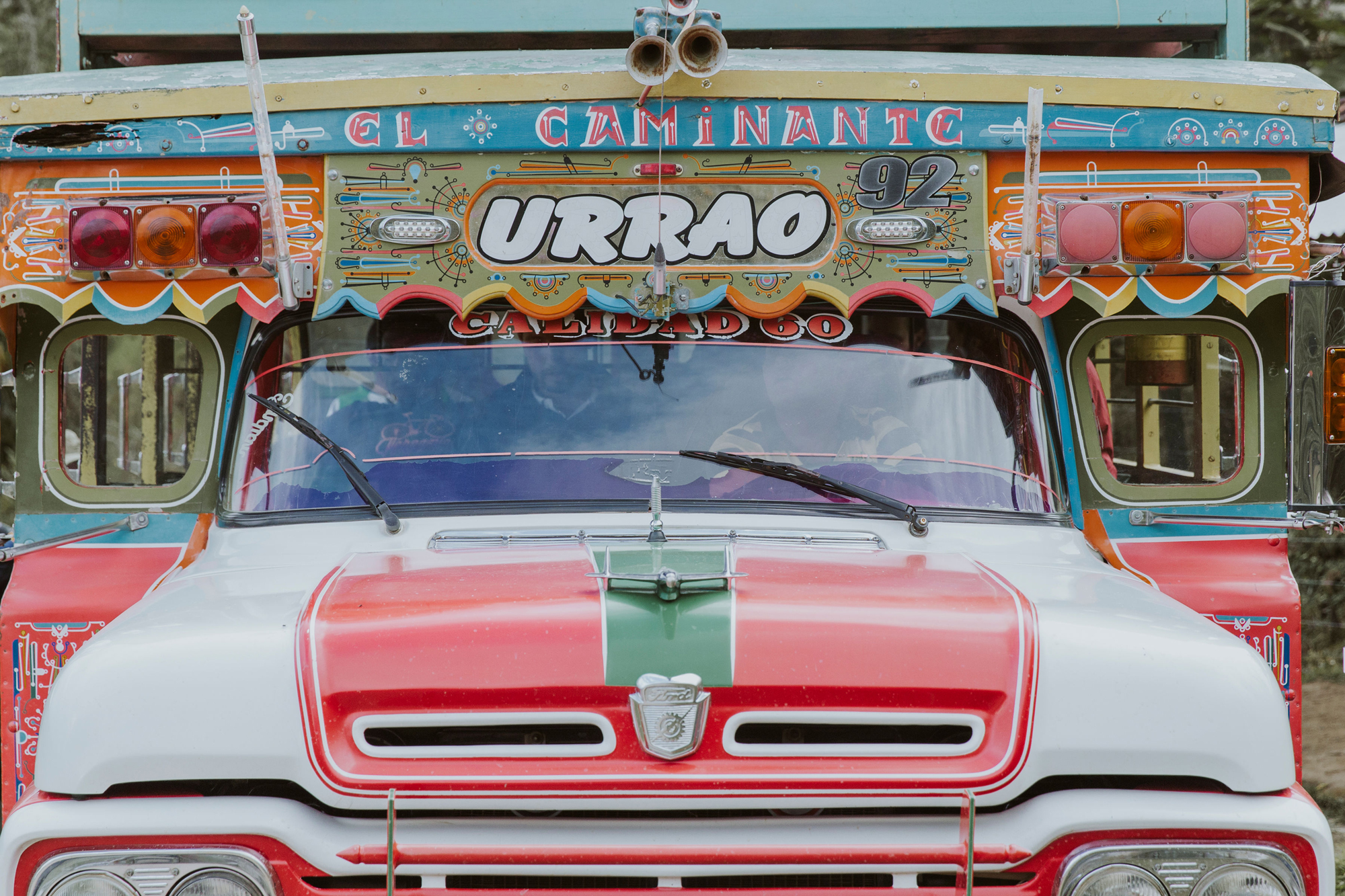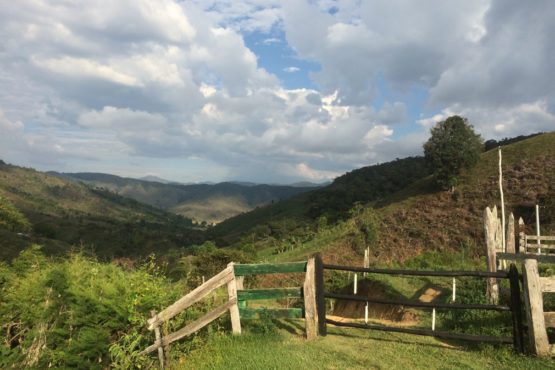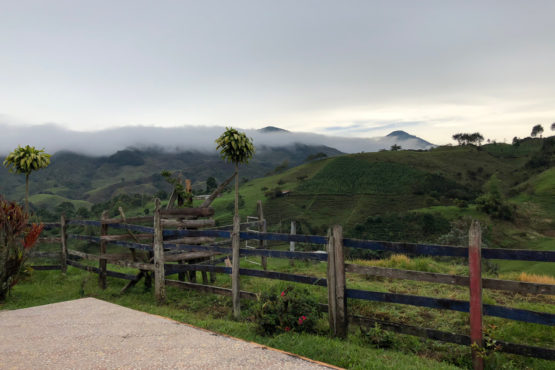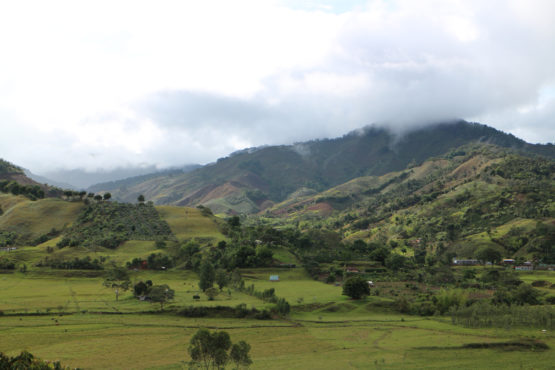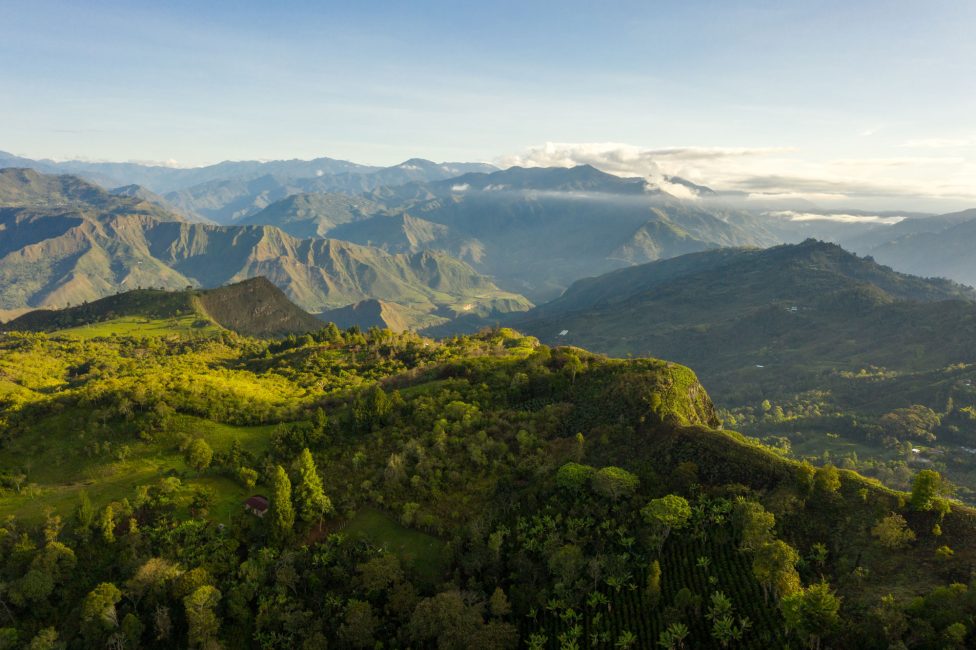Finca Los Palomos
Unique and complex, with great intensity and depth. Orange blossom florals, mandarin and Pink Lady apple.
This special micro-lot was grown and processed by Léonardo Henao on his 10 hectare farm, Los Palomos (meaning ‘the doves’ in Spanish) situated near the small community of Pavón, in the municipality of Urrao in Colombia’s Antioquia State. The farm sits at a staggering 2,100m above sea level, overlooking the high, rolling hills of Urrao.
We are excited to be featuring a coffee from our good friend Léonardo, who is also the Director of Coffee for our supply partner, Pergamino, and one of the most knowledgeable, curious and passionate coffee professionals we have met. Through his work with Pergamino, Léo was inspired to establish his own coffee farm in the beautiful region of Urrao. Finca Los Palomos represents Léo’s deep respect for ancestral traditions with a detailed knowledge of coffee varieties and post-harvest processes.
Léo is assisted in the day-to-day operations by his long-time friend Jorge Cuellar, who acts as the farm’s administrator. Together, they have focused on experimenting with new varieties and processing methods to achieve the highest possible cup quality.
This micro-lot is 100% Chiroso, a newly identified variety that has become recognised internationally for its exceptional cup quality. The Chiroso variety was ‘discovered’ in Urrao, where it was initially thought to be a mutation of the Caturra variety that has been thoroughly propagated in this area. Chiroso went on to be cultivated for its resilience to the cool climate of Urrao, and is now being celebrated for its complex and floral cup profile, which attracts higher premiums from specialty buyers. Coupled with the slow fermentation process typical to Urrao, this variety has resulted in some outstanding coffee lots (including Colombia’s 2020 Cup of Excellence winner) and has brought international attention to this micro-region of Colombia. More recent DNA studies done on the variety have shown Chiroso to be an Ethiopian landrace variety (similar to the famous Gesha variety), though it is still unclear how it ended up in Antioquia, Colombia.
Local farmers have distinguished two types of Chiroso variety: ‘Chiroso Caturra’, which comes from a shorter tree that produces smaller beans, similar to Caturra, and ‘Chiroso Borbon,’ which comes from a taller tree and produces more elongated beans, similar to Bourbon. The Chiroso Bourbon was only discovered recently, during one of Pergamino’s visits to José Arcadio Caro, one of the original growers to cultivate Chiroso some thirty years ago. José relayed that every so often there were taller trees growing on his farm, with a distinct size and shape of the cherries. The team at Pergamino isolated these trees and cultivated them on Léo’s land, eventually discovering that these plants produced coffees with outstanding complexity and flavour.
Now, Léo has a small section of his farm devoted to growing the taller Chiroso variety. This is one of the first lots to be produced and exported from this parcel of land. We are so excited to share it with our community here in Australia.
ABOUT URRAO
Urrao is a unique and special coffee-growing region, located in the valley of Rio Penderisco, at around 1900m above sea level. Unlike other producing regions in Colombia, which are characterised by deep canyons and massive, rugged mountains, Urrao is covered in rolling green hills, calm pastures and beautiful rivers that snake through the landscape. This geography guarantees cool temperatures year-round, typically only reaching between 12-25 degrees. This cool climate is ideal for the slow ripening of coffee cherries, leading to denser beans and a sweeter, more complex cup profile.
Until recently, Urrao was overlooked as a coffee-producing region and dismissed by many as being too cold for good production. There is still very little coffee produced in the area, despite it being some of the most fertile land in Antioquia. Many farmers complement the income they make from coffee by growing Lulu, a type of passionfruit that tastes similar to a kiwi fruit and that is incredibly popular in Colombia. Coffee grown in Urrao is slowly becoming recognised and sought after for its high-quality and complexity.
Farms in Urrao are very small – averaging just 1.5 hectares – and are traditionally farmed. Fertilisation occurs around three times a year, usually after manual weeding, and pesticides are rarely used. The coffee is selectively hand-harvested, with most labour being provided by the farmers and their families.
ABOUT ANTIOQUIA
Antioquia is located in central northwestern Colombia. Coffee was introduced to the region in the latter part of the 19thcentury. Since then, this mountainous, fertile department has 128,000 hectares of coffee that is produced by a mix of large estates and tiny farms.
Antioquia only recently became more accessible to specialty coffee buyers – largely thanks to a transformation of the department led by Sergio Fajardo, who was the governor of the department between 2012-2016. Sergio transformed Antioquia’s capital city, Medellín, from a violent and dangerous place to a world-class tourist destination with a strong economy. Coffee has played a significant role in this this transformation, and as access to many producers has improved, the region has become one of Colombia’s most important and celebrated coffee-producing areas.
Our export partners for this coffee, Pergamino, have worked hard commercialise specialty-grade coffee throughout Antioquia, and have uncovered some stunning coffees and very dedicated producers in the process. They work closely with the producers to give them feedback on their coffees (provided by Pergamino’s expert team of cuppers) and provide top up payments when the coffee is sold at a higher premium.
Head here to learn more about the work of Pergamino and Léo’s role within the business.
HOW THIS COFFEE WAS PROCESSED
The coffees in this lot were selectively hand-harvested, with most labour being provided by the farmers and their families. They were processed with an extended fermentation, as part of the washing method, at each farm’s ‘micro-beneficio’ (mill).
The coffee was pulped using a small manual or electric pulper and then placed into a fermentation tank. Because of the cooler climate in Urrao, producers tend to ferment the coffees for longer than usual and will often blend several days’ worth of pickings over a 3-5 day period. Every day, freshly picked cherry is pulped and added to the mix. This is key, as it lowers the pH level and – along with the cooler temperatures – allows for an extended fermentation process. This fermentation process contributes to a vibrant, winey acidity in the coffee’s cup profile.
Following fermentation, the coffee was washed using clean water from the Rio Penderisco and then carefully sun-dried over 10–18 days. Most farmers in the area use the “Casa Elba” system for drying, where parchment is laid out to dry on rooftop patios (usually on top of the farmhouse). A retractable roof on a pulley system can be pulled over the coffee to protect it during rainy weather or to slow down the drying process when it is very hot and sunny. Rakes are used to turn the coffee regularly during the drying stage, to ensure even drying.
Once dry, the coffee was delivered to Pergamino’s warehouse, where it was cupped and graded, and then rested in parchment until it was ready for export.
